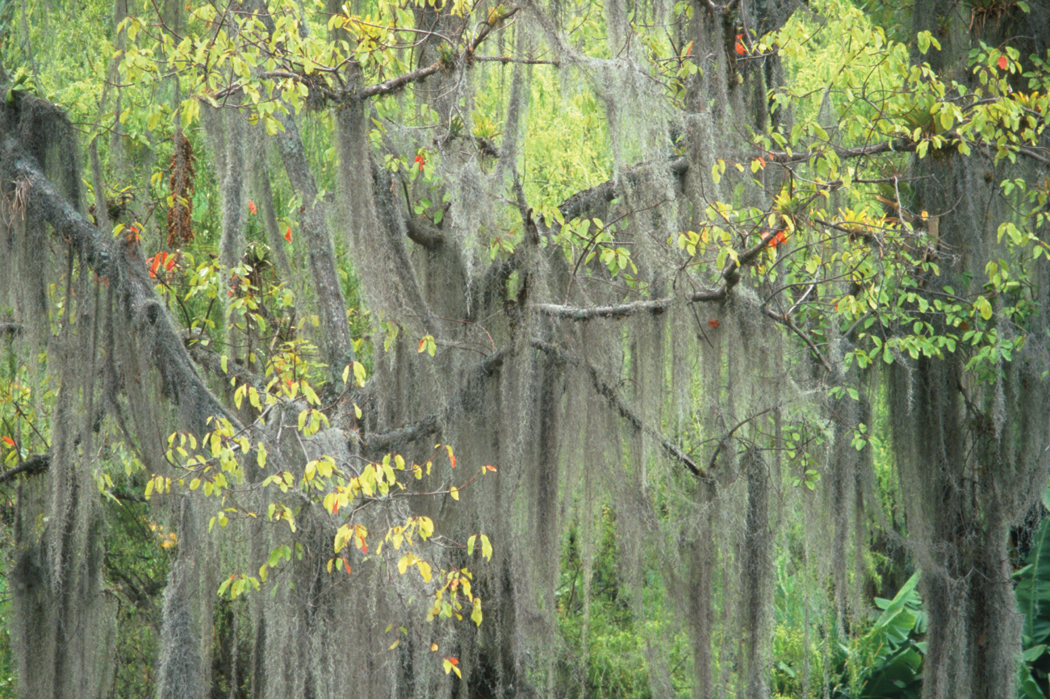Spanish moss is a hanging plant that lives from the southeastern United States to Argentina and Chile. It commonly hangs from trees, cliffs, and even telephone lines. Its grayish, hairlike stems can grow more than 20 feet (6 meters) in length but usually measure 3 to 4 feet (0.9 to 1.2 meters) long. The plant also has long, narrow, silver-gray leaf blades and small yellow-green flowers.
Spanish moss is not a true moss but an epiphyte. Epiphytes are plants that grow on other plants and make their own food. Spanish moss has no roots. Instead, it absorbs water from the air and gets nutrients from airborne dust. The plant normally reproduces through a process called vegetative propagation. In this process, wind tears up the plants and spreads the torn parts to other areas, where they start to grow.

People use Spanish moss flowers for decoration. Birds favor the plant’s tough, flexible stems as a material for building nests. Other names for Spanish moss include graybeard and Louisiana moss.
